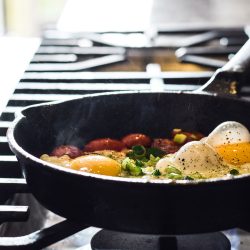If you've seen recipes that call for cooking a dish in a pan on the stove and then transferring it to the oven, you may be wondering if it's safe to put your pan in the oven. We've done the research for you to discover what pans you can safely put in the oven and which are better used only on the stove.
Most pans can go in the oven, but the oven-safe temperature varies depending on what materials it's made of and the brand. It's generally safe to put most pans in the oven at temperatures up to 350 degrees Fahrenheit. However, there's one exception. You shouldn't put pans with plastic handles in the oven unless they are clearly labeled heat safe.
Continue reading to find out more about which pans are safe to put in the oven at what temperatures. We'll also discuss some measures you may be able to use to protect your pan handles at higher temperatures and which pans you should never put in the oven.
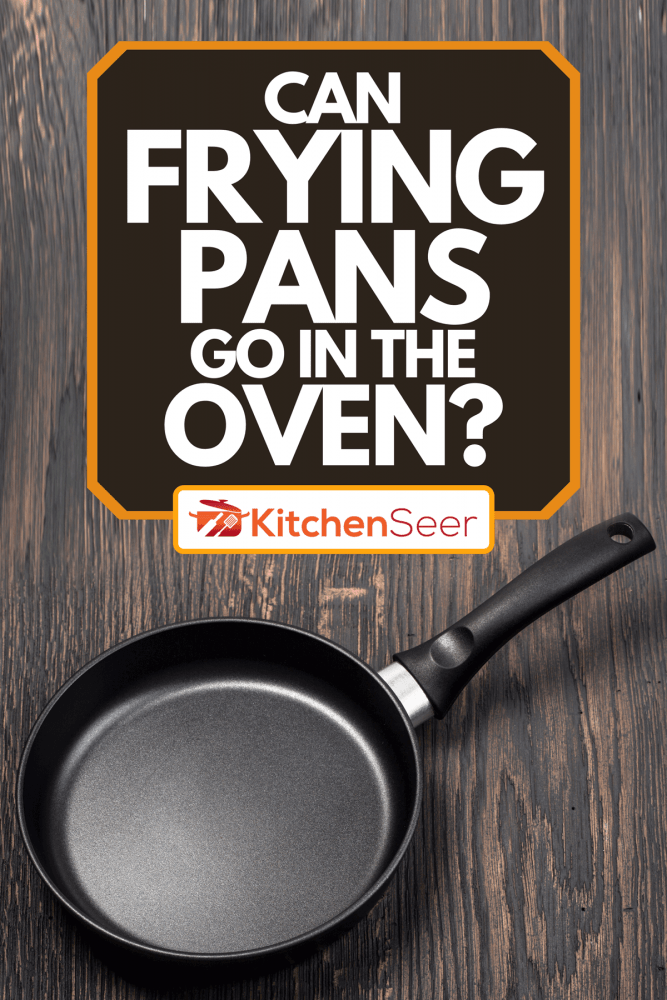
What Frying Pans Can Go In The Oven?
While most pans can safely go in the oven up to 350 degrees Fahrenheit, in this section, we'll cover the pans that you can usually put in the oven at much higher temperatures without worry.
However, you should always check to be sure about your particular pan. Most major manufacturers put an oven-safe mark on the bottom of their pans. If there isn't one, you may be able to find the information online by going to the manufacturer's website.
Stainless Steel Pans
Stainless steel pans are almost indestructible. You can put a pan that is entirely stainless steel in the oven at temperatures up to 500 to 600 degrees Fahrenheit, far hotter than you'll probably ever need. Stainless steel is the workhorse of most professional kitchens.
Chefs love stainless steel because it's not only versatile, but its even heat distribution makes it superior for cooking. Additionally, if there is a mishap in the kitchen and you end up with a burned, sticky mess, you can soak stainless steel in dishwater to clean the mess.
Click here to shop for stainless steel pans on Amazon.
Cast Iron Pans
Cast iron pans have a reputation for being extremely durable and versatile. Cast iron pans can indeed last for generations and be used in almost any circumstances. As long as your pan is completely cast iron (no wooden handles), you can put it in the oven without worry. This is probably the pan your grandmother used to cook cornbread.
Cast iron pans are so durable that avid campers and scouts use them for cooking food directly over or even in campfires. However, the main drawback to cast iron is that they do require more specialized care. Cast iron pans need to be adequately seasoned before you use them. You should never plop your cast iron pan into a sink full of soapy water to clean it, as you would with stainless steel.
The main benefit of cast iron is that it gets extremely hot and stays hot. Although it does heat up unevenly, once it reaches a uniform high heat, it holds onto that heat well. Cast iron is best for sturdy and nonacidic foods. Delicate fish and tomato-based sauces are best cooked in a different pan, such as stainless steel.
Click here to check out cast iron pans on Amazon.
Copper Pans
Copper pans are safe to use in the oven and conduct heat very well. The main disadvantage of copper pans is their price. Copper pans are beautiful and heat up very quickly. Unlike cast iron, they don't need a long prewarming period.
One important thing to note about copper pans is that they're always lined with another metal. Copper is reactive and can leach into acidic foods, causing you to ingest copper. This isn't healthy, so copper pans are lined with a non-reactive metal. Most copper pans today are lined with stainless steel, so they're perfectly fine in the oven.
However, some older copper pans were lined with tin. Tin has a very low melting point of about 450 degrees Fahrenheit, so it shouldn't be used in a hot oven.

Carbon Steel Pans
Carbon steel pans share many similarities with cast iron pans and can be used in the oven without worry, even at very high heat. The main difference between carbon steel and cast iron is that carbon steel is thinner and smoother than cast iron. If you like the properties of cast iron but aren't a fan of its clunkiness, you may enjoy carbon steel more. Carbon steel is also easier to season and provides a better nonstick surface because of its smoothness.
Carbon steel pans also tend to be more sloped than cast iron, which may be a benefit or not, depending on what you're cooking. Carbon steel pans are generally lighter, although they are not lightweight by any means. However, keep in mind that carbon steel is just as demanding as cast iron when it comes to caring for it and seasoning it.
Click here to shop for carbon steel pans on Amazon.
How Do You Know If Your Pan Is Oven Safe?
The best way to tell if it's safe to put your pan in the oven is to check the bottom of your pan. Most manufacturers put a stamp on the bottom of the pan that indicates the maximum temperature it can withstand in the oven. If your pan doesn't have this, check the manufacturer's website to see if they have the information listed there.
If you can't find any information about your pan, but it's made of one of the materials discussed above, including the handles, it's safe to use in the oven. If you can't find any information about your pan and you're unsure what it's made of, don't put it in the oven.
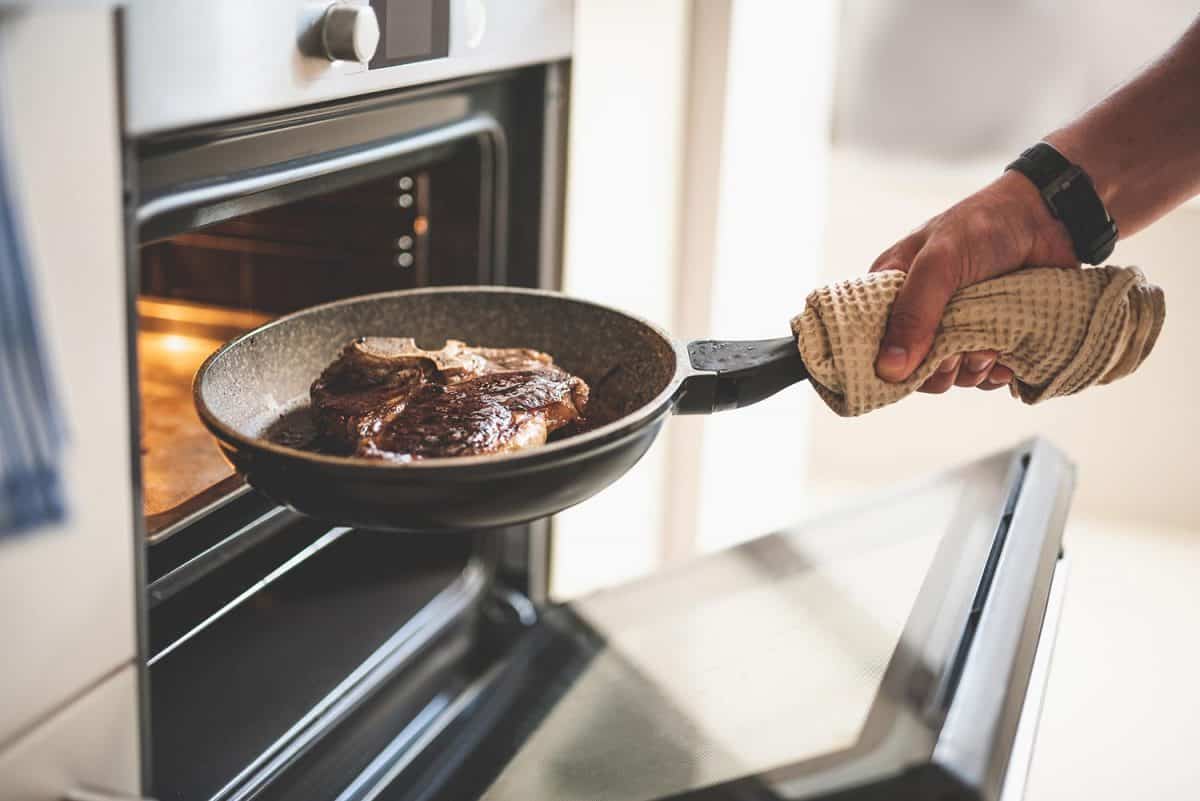
What Happens When You Put A Non-Oven-Safe Pan In The Oven?
The best outcome of putting a non-oven-safe pan in an oven is that it ruins your pan. Unfortunately, the worst result of putting a non-oven-safe pan in the oven is releasing toxic fumes. Some types of melting plastic release harmful gases when they're melted, which is why it's better to be safe than sorry when it comes to putting pans in the oven.
Will A Pan Handle Melt In The Oven?
Some types of handles will melt in the oven. Bakelite is a type of plastic that can tolerate temperatures of up to 350 degrees Fahrenheit. In general, you should not put pans with plastic handles in the oven unless they're labeled heat stable. Silicone pan handles are usually safe for temperatures up to 400 degrees Fahrenheit. However, most are designed to be removable, so you can take them off when you put your pan in the oven.
Click here to check out silicon pan holders on Amazon.
Can You Put Nonstick Pans In The Oven?
Most nonstick pans can go in the oven up to 350 degrees Fahrenheit, and some are safe in the oven at up to 500 degrees Fahrenheit. You should check your pan, but the difference depends on the material it's made from.
Teflon Nonstick Pans
Teflon pans made before 2013 can release toxic fumes if heated to over 500 degrees Fahrenheit. Teflon pans made before 2013 should be replaced since they contain perfluorooctanoic acid (PFOA), responsible for poisonous fumes.
Most Teflon pans produced since 2013 don't contain PFOA, but you should still consult the manufacturer's guidelines regarding the safety of putting the pan in the oven.
Ceramic Nonstick Pans
Ceramic nonstick pans use newer technology than Teflon, and many people consider them more environmentally friendly. They don't contain the chemicals that Teflon pans do. Ceramic pans are usually free of toxins, but their nonstick properties can break down if they're heated to high temperatures.
In general, all types of nonstick pans can safely be heated to 350 degrees Fahrenheit. Don't heat them to higher temperatures unless they are rated for them by the manufacturer.
Click here to check out ceramic pans on Amazon.
In Closing
Many delicious dishes are best cooked in pans in the oven. Most pans can be safely used in the oven at temperatures up to 350 degrees Fahrenheit, and many can be safely used at much higher temperatures. Pans with wooden or plastic handles shouldn't be used in the oven unless rated heat safe. By keeping these guidelines in mind, you can safely determine which you can safely use in the oven.
If you're interested in more articles on cooking, check out these posts:
How To Grill French Fries [Inc. 11 Must-Try Recipes]







![Cooking frittata with a green asparagus and parmesan on the oven, Are Pans Oven-Safe? [Even With Silicone Handles]](https://kitchenseer.com/wp-content/uploads/2022/07/Cooking-frittata-with-green-asparagus-and-parmesan-on-the-oven-250x250.jpg)
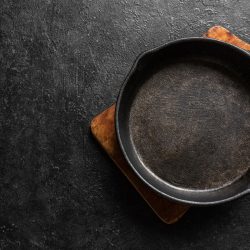
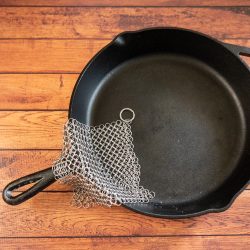
![A Nonstick All Clad pot and pan aisle at a Williams Sonoma store, Are All-Clad Pans Teflon Free? [A Complete Guide]](https://kitchenseer.com/wp-content/uploads/2022/10/Nonstick-All-Clad-pot-and-pan-aisle-at-a-Williams-Sonoma-store-250x250.jpg)
